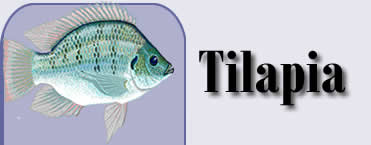Tilapia history and tilapia future
Tilapia history
One of the oldest examples of tilapia farming is a bas-relief found in a 4,000 year old Egyptian tomb depicting tilapias held in ponds. The Nile tilapia was called ỉn.t by the Ancient Egyptians the fish was of such great importance to them that it was given its own hieroglyph. The hieroglyph is now number K1 on Gardiner's Sign List, a list of common Egyptian hieroglyphs compiled by British Egyptologist Sir Alan Gardiner. When used as a logogram, this hieroglyph represented a Nile tilapia. When used as a determinative (ideogram), it could signify not only Nile tilapia, but flathead mullets as well. Just like the Nile tilapias, flathead mullets were important food fishes in Ancient Egypt. When used as part of a phonogram, the hieroglyph represented the sound ỉn.
The Ancient Egyptians were not the only ones who appreciated tilapia. Tilapia has been, and still is, an important food fish for a lot of different groups living in Africa and the Levant. The Greek are known as tilapia fans and Aristotle is believed to have named it Tilapia niloticus (fish of the Nile) in 300 BC.
The tilapia is a part of Christian mythology since the fish caught by the apostle Peter in Matthew 17:27 is believed to have been a tilapia. In English, tilapia species with a certain spotted pattern are commonly referred to as "St. Peter's fish". According to legend, the dark spots on the fish were caused by the fingerprints of the apostle. The name St. Peter's fish is also used for John Dory fish, Zeus faber, but this is a marine species and the story in the bible revolves around the Sea of Galilee, which is a freshwater lake in Israel. The Sea of Galilee is home to the tilapia Sarotherodon galilaeus galilaeus. Sarotherodon galilaeus galilaeus has been fished by local fishermen in the Sea of Galilee for thousands of years.
When they came to Capernaum, the collectors of the temple tax came up to Peter and said, "Your teacher pays the temple tax, doesn't he?" He answered, "Yes." When Peter went home, Jesus spoke to him first, saying, "What do you think, Simon? From whom do kings on the earth collect tolls or tributes? From their own subjects, or from foreigners?" When he said, "From foreigners," Jesus said to him, "In that case, the subjects are exempt. However, so that we don't offend them, go to the sea and throw in a hook. Take the first fish that comes up, open its mouth, and you will find a coin. Take it and give it to them for me and you."
Matthew 17:24-17:27
Tilapia in the future?
As the wild fish populations in our oceans are facing problems with over fishing, more and more consumers are looking for alternatives to endangered species like cod. Tilapia could play an important role here, since it can be farmed instead of caught from the wild. Several projects have also been launched where destitute families around the world are encouraged to farm tilapias in their own backyard to feed themselves and possibly sell surplus fish at local markets. In Latin America, larger commercial farms exporting fresh tilapia to the U.S. market have provided job opportunities for the local population. Tilapia farms exporting frozen tilapia are also an important source of income for many countries in South East Asia. Tilapia farms can be a way for tropical countries to take advantage of their warm climate, since tilapia can be grown year round as long as the water temperature is high enough.
It should be noted that farmed tilapia comes with it own set of problems. Tilapia farms can pollute surrounding waters with organic waste and there is also the risk of tilapias escaping and disturbing the native ecosystem. Tilapia can also bring new pathogens to the local fish populations. One advantage with tilapia however, is that it can be farmed in enclosed systems that prevent pollutions from entering the environment and reduce the risk of escapes. Unlike salmon, another popular food fish, tilapia doesn’t need to be farmed in the ocean. Enclosed systems are however much more expensive to set up and maintain than simple ponds and it is difficult for small scale farmers to afford them.
Another important aspect of tilapia farming is that many of the most popular tilapia species do not need to be fed protein rich food. Farmed salmon is typically fed meal produced from fish and other marine organisms. Farming salmon will therefore always increase the demand for other fish, and this can actually contribute to over fishing instead of help solving the problem. The ability to survive on detritus, algae and similar also make tilapia an ideal choice for small substance farmers that could not afford to purchase fish meal to feed their tilapia. In many countries, small scale tilapia farming is today combined with small scale production of pigs and chickens. The manure produced by pigs, chickens and similar animals can be used to fertilize the tilapia pond, thereby boosting the levels of suitable tilapia food.
